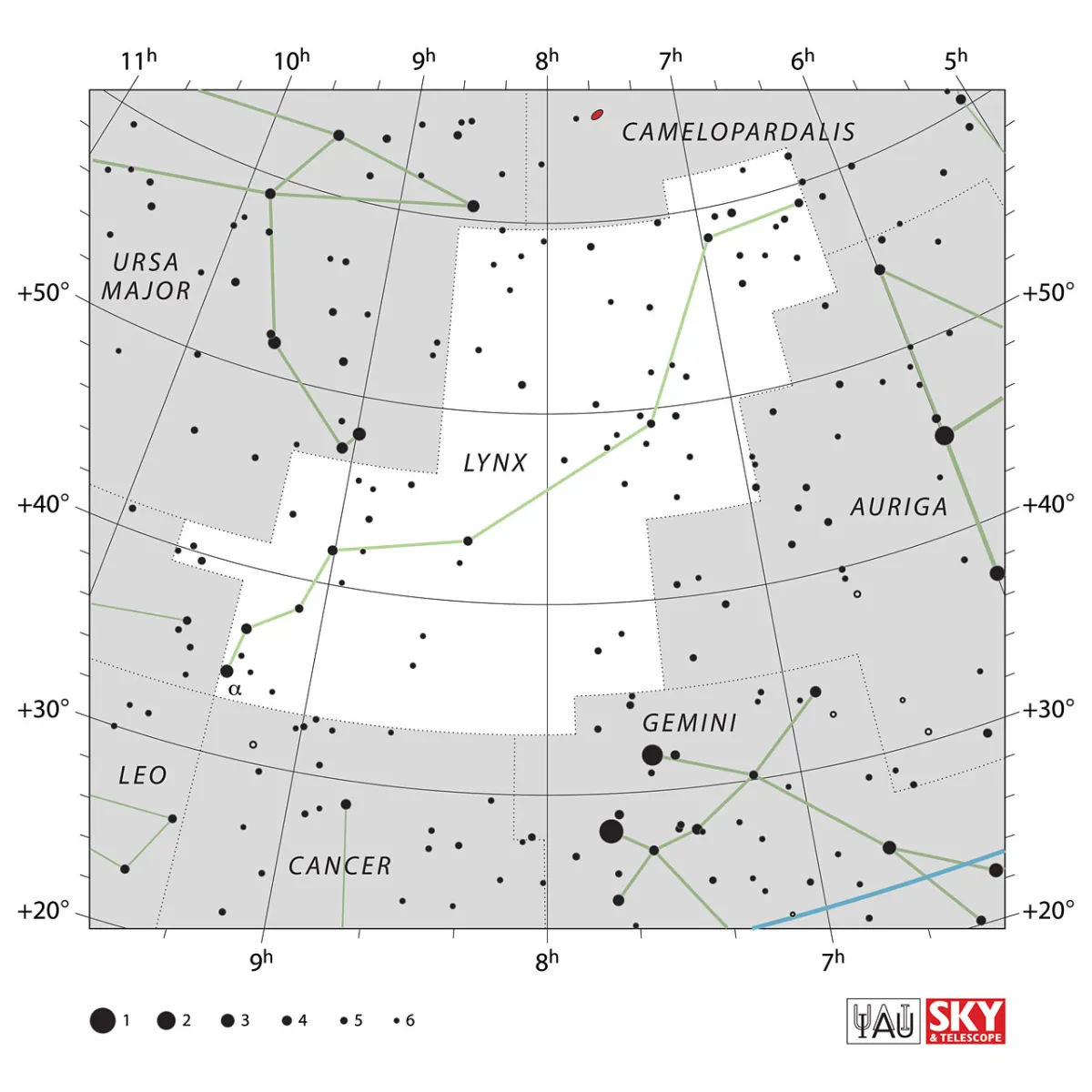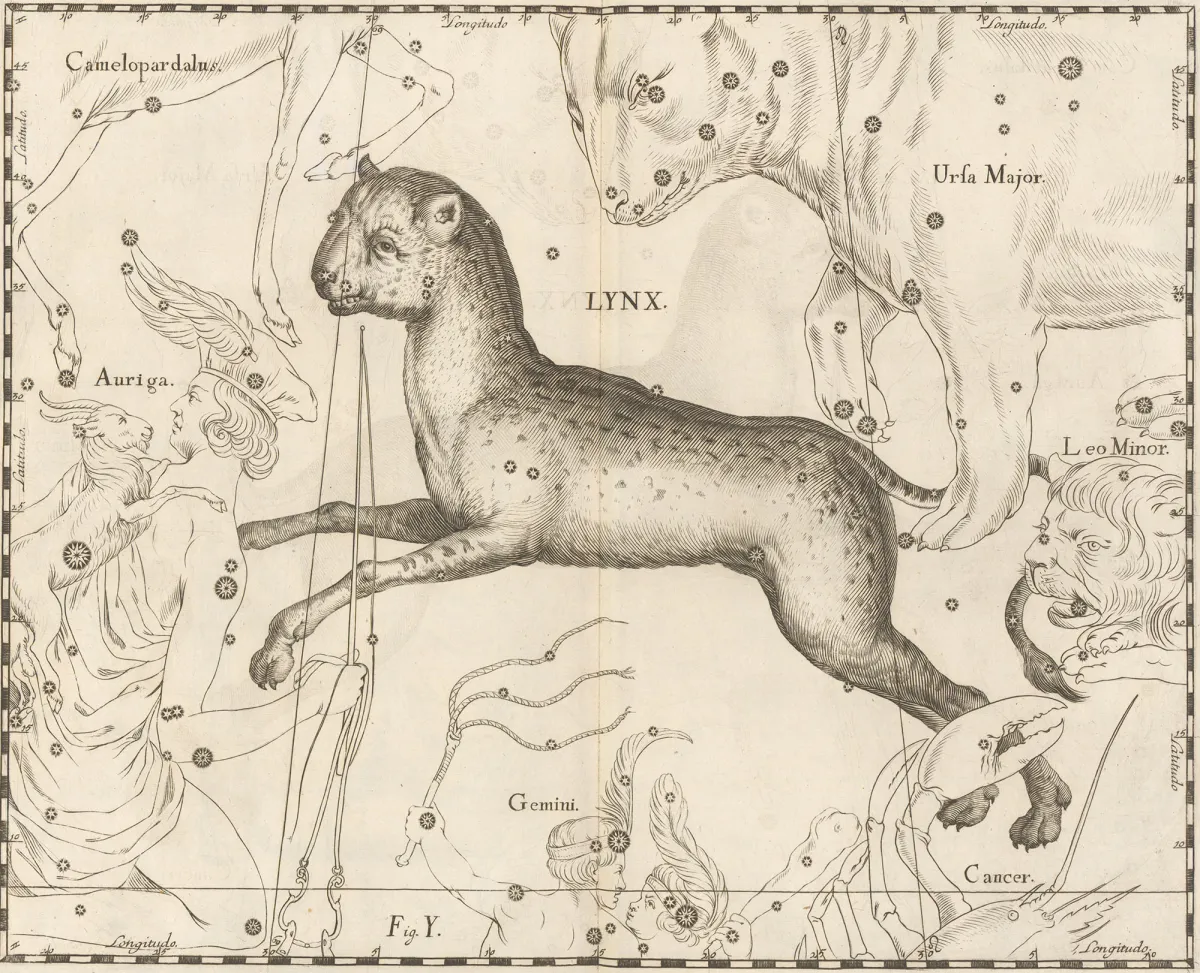Constellation Lynx

Properties
Despite its extent, the constellation is entirely inconspicuous, with the brightest star reaching barely 3. magnitude. It lies between the more prominent constellations Ursa Maior, Auriga and Gemini. It spans an area of 545 square degrees. The centre culminates at about midnight on 20 January each year. [9, 15]
| 31 Lyn | Alsciaukat, Mabsuthat |
| IAU Name | Lynx |
| IAU Genitive | Lyncis |
| IAU Abbr. | Lyn |
| English Name | Lynx |
| Culmination at local midnight | 18 January |
| Season (Latitude +0.0°) | September … June |
| Right Ascension (J2000.0) | 06h 16m 14s … 09h 42m 50s |
| Declination (J2000.0) | +32° 58' 09" … +61° 57' 51" |
| Area | 545 deg2 |
| Neighbours (N↻) | Cam, Aur, Gem, Cnc, Leo, LMi, UMa |
Deep-Sky Object Descriptions
Catalogues

History
The constellation Lynx was introduced by Johannes Hevelius in the late 17th century to fill the gap between the more famous constellations Ursa Maior and Auriga. It is said that the name is an allusion that one would only be able to recognize the constellation with lynx eyes. [7]